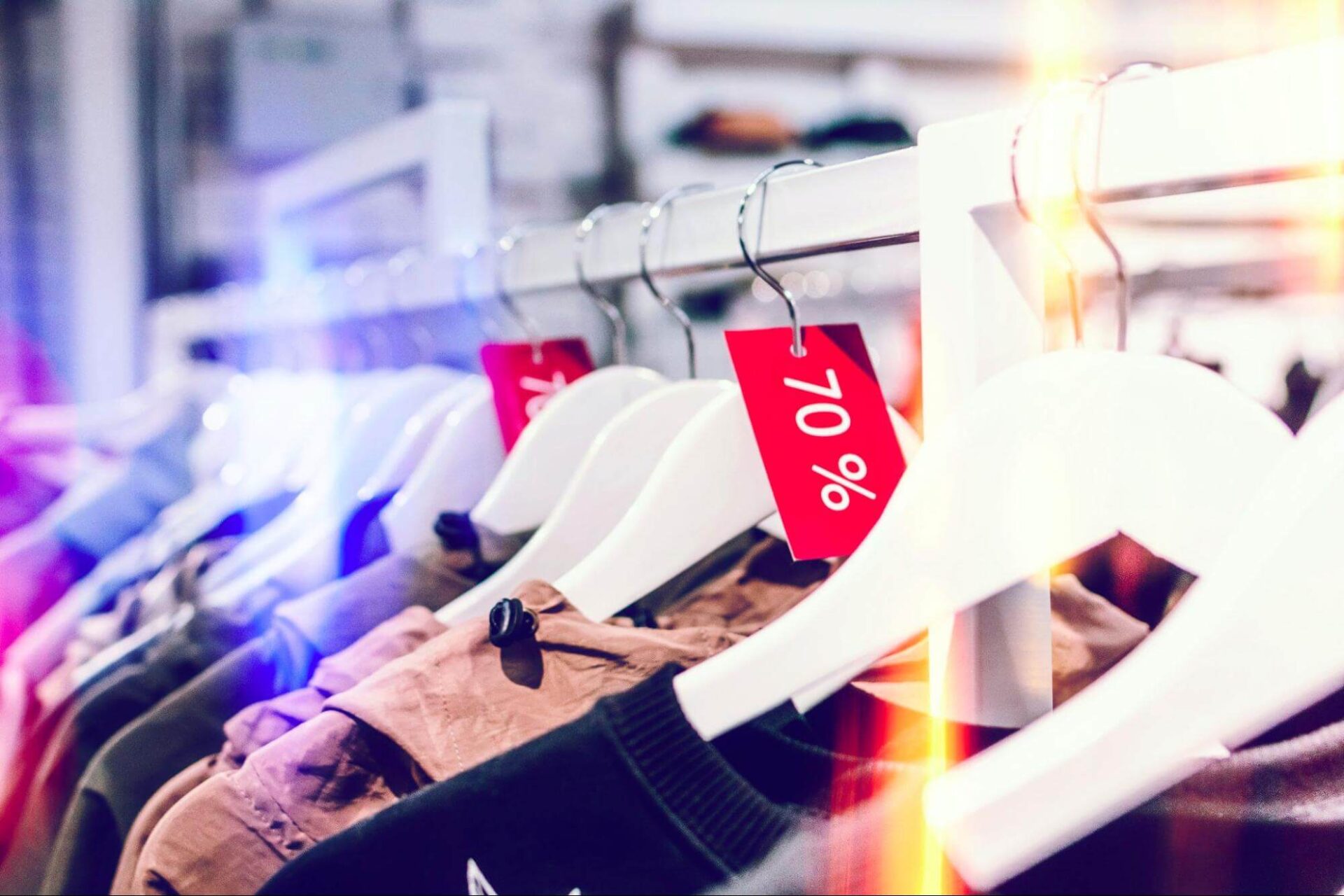So, you want to start your own fashion business. How hard can it be? Well, let’s just say you’ll need more than just a unique design in order to create a successful brand. Apparel retailers need to know how to write a great business plan and master fashion production, retailing, and fashion marketing, among other things.
While launching your own fashion business is challenging, thanks to eCommerce, online marketing, easy access to information, and cutting-edge technology like artificial intelligence, it is quite possible to turn a small online store into a major clothing brand.
So, if you’re a fashion designer or an entrepreneur with a passion for fashion and you wonder how to get into the fashion industry, I’m offering valuable tips that will help you start a fashion business and set you up for success.
How to Get Into the Fashion Industry: Tips to Start a Fashion Business
If you’re interested in fashion entrepreneurship, starting a clothing business might be a great way to turn your passion and skills into a career in fashion. Here’s everything you need to know about how to get into the fashion industry by starting your own apparel business.
Identify Your Niche
The first step toward starting a successful apparel brand is finding your niche. This will assist you in developing a product range that appeals to your target audience and establishing a strong brand. Keep in mind that, as enticing as it might be to attempt to appeal to everybody, the best companies (Adidas, H&M, Ralph Lauren, to name a few) have a clear niche and stick to it.
Finding your niche starts with researching and media monitoring. Check out relevant brands online and in stores, talk to shop owners, talk to your friends and relatives, and read everything you can about your idea. This will assist you in connecting the dots and provide you with a clear image of where your idea and brand should be headed.
You should also consider your passions and skills. What’s your personal style? Do you love tailored suits? Are you obsessed with streetwear? You will work on your clothing business 24/7, so if your passion doesn’t lie in the niche you’ve chosen, you’ll find it hard to succeed.
Create a Fashion Business Plan
A brand without a solid business plan is like a fish without water. Your fashion business plan doesn’t need to be extensive – it can be 1-2 pages long, with crucial parts of the clothing line’s business strategy identified.
A brand statement, a description of your products, and a strategy for selling them should all be included in your business plan. To build a firm basis for your clothing brand’s successful future, you may wish to include your pricing structure, as well as all of the relevant logistical and legal business considerations.
Create Your Brand
When naming your fashion business, you should choose a name that’s catchy, memorable, and easy to spell and pronounce. Once you’ve chosen a business name, choose a color scheme, and slogan, and design your logo.
If you are looking for a simple and inexpensive approach to creating your logo, try Canva, a free tool with a great number of prebuilt logos you can alter. You can also acquire a professionally created logo at an affordable price on freelance platforms like Fiverr.
Register Your Fashion Business
The next thing to do is register your fashion business with your state in order to obtain an EIN (Employer Identification Number) that will allow you to accept payments, work with retailers, and obtain wholesale pricing.
The method of registering a business varies by state. Small firms usually choose to register an LLC (Limited Liability Corporation), which costs on average around $100.
Design Your Products
You most likely already have a plan for how you’ll develop and source your products but if that’s not the case, there are three basic options: you can either design and produce your own products in-house, design your products and have them made by someone else, or purchase products from wholesalers.
The option you select will be determined by how you want to sell your goods. For instance, you might buy things from wholesalers or drop shippers if you’re planning to curate apparel collections to sell online, such as on Amazon or directly through your website. This is an excellent strategy to keep your startup costs minimal, especially if you’re selling drop-shipped items. However, this also implies that your products aren’t particularly unique which means you’ll need to invest more in marketing.
Price Your Products
Two major factors influence product pricing in the fashion industry: the cost of goods sold and the niche you’ve chosen. Many fashion businesses, for example, employ the keystone markup technique, in which the price is derived by doubling the cost of manufacture.
Some of the costs to consider when pricing your products include time, materials, marketing, packaging, and shipping.
Distribute Your Products
Apparel companies have a variety of distribution choices, including selling directly through their own website and on third-party websites like Etsy and Amazon, as well as selling in-store, through local or national retailers. It’s generally advisable to sell your products through a wide range of channels in order to increase your exposure and your chances to make sales.
Also, it’s a good idea to have a website even if you don’t plan to sell your products through it. This helps you create your brand, and it gives retailers a way to check out your lookbooks and product catalogs.
Market Your Fashion Brand
You must market your apparel brand in order for it to be noticed by your target customers. There are many ways to promote an apparel brand, but the most important thing is to select the channels that will help you reach your specific target market.
Organic and paid social media marketing, influencer marketing, content creation, SEO, paid search advertising, email marketing, and banner ads are just a few of the most popular marketing channels and techniques for fashion houses to build a strong online presence and make sales. You’ll want to use numerous marketing channels for optimum visibility.

How To Write a Fashion Business Plan?
As you can see, one of the first and most significant tasks when starting a new business is to write a business plan. Regardless of the industry, most company plans are designed in a similar way. Writing a plan may appear intimidating at first because of the numerous sections and subsections it contains, but the backbone of your presentation should focus on a few principles.
Here are the main components of a fashion business plan:
Executive summary. This section of your business plan should include your mission statement as well as an “elevator pitch” for your business idea. Write a summary of your brand and say what makes it unique. In addition, make a concise outline of your target consumer, revenue goals, and timeline. The executive summary should be written last and shouldn’t be more than two paragraphs long.
Company overview. This part of the business plan displays the relevant hands-on experience of the company’s founders, including education, previous positions, and distinctive skills. You should also include the type of business entity and any relevant partners, describe your manufacturing method and product’s features in detail, and explain where and how you intend to distribute and sell your products. Finally, make a list of the major challenges you expect to face.
Market research and analysis. In this section, you should identify and detail the opportunities in fashion and the size of your unique market, as well as your competitors and target clients.
Marketing and sales. Describe which channels you’ll be using to sell your products (wholesale, boutiques, department stores, etc.), as well as the launch date and marketing initiatives. In addition, explain the relationship and costs if you intend to hire a distributor or showroom, and describe how you’re going to grow your business.
Financial summary. This section contains the income statement, which shows your profits, revenues, losses, and expenses over a specified time period. It should also present your three-year sales prediction to show annual growth objectives, as well as a cash flow statement to break down liquidity and determine future funding needs.
Benefits of Having a Fashion Business Plan
So, why is creating a business plan so important? For one, you’ll face fewer surprises as you attempt to establish your brand if you put all parts on paper. Here are just a handful of the many benefits of drafting a fashion business plan.
- Writing a detailed fashion business plan can assist you in developing consistent messaging about your company’s goals and core values. Determining what your brand stands for will help you attract investors as well as top employee talent. As your business plan begins to take shape, you’ll begin to see the distinct characteristics that set you apart from the competitors, allowing you to create a distinct brand that both customers and future employees are proud to support.
- A detailed business plan will make your clothing brand more appealing to investors. Having a great business plan can make a big difference whether you’re looking for funding from a local bank or angel investors. Individuals and lending institutions will be far more willing to back your fashion business if they believe in your products, goals, and leadership.
- One of the biggest advantages of writing a business plan is that it addresses a lot of the unknown eventualities and variables that may otherwise go unnoticed. Administrative expenses, revenue estimates, equipment costs, and inventory breakage should all be factored into a good business plan.
- Creating a business plan allows you to properly evaluate the financial side of things before starting your apparel company. Estimating net profit, monthly expenses, and cash flow can assist investors in estimating your company’s viability and avert numerous future accounting problems. Knowing what to expect financially when starting a fashion company will lower the possibility of your brand running into cash flow problems later.
- Finally, a well-structured fashion business plan defines clear success criteria. It will assist you in defining your company’s short- and long-term objectives. Writing these objectives down gives your clothing line a clear direction and helps you and your staff stay focused. You might feel more secure about expanding or going in a new direction as your apparel company meets and exceeds the targets you set out in your business plan.
The Bottom Line
Starting a fashion business is a great way to combine your artistic enthusiasm with your business savviness and transform your passion into a lucrative venture. Furthermore, starting a clothing brand is more affordable than ever, so you won’t need a large investment to get started.
What you will need is to take some time to do your research, prepare, and write a solid business plan. Focus on producing short summaries for the core elements of your business plan, to begin with, and then expand on these areas later with extra subsections or supporting data.
Once you’ve taken care of the fundamentals, the rest of your fashion business plan will fall into place.



